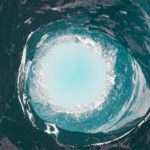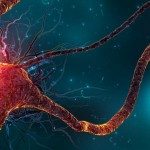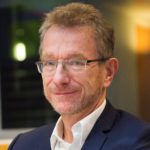About
A version in French is available here
INTERMUSE aims to establish the concepts and observations that give access to understanding the mechanisms structuring human thought when it gives meaning to a perceptual experience. This program is carried out through the study of signifying sound. Within this framework, it focuses on the field of music and sound communication. It is an interdisciplinary project, combining a reductionist approach with a holistic apprehension. It touches on the fields of systems biology, neuroscience, music theory, philosophy and psychology.
We understand cognition as the broad capacity of an individual to mobilize knowledge to understand and integrate into the world. The brain is the central organ that implements and organizes this cognition: in particular, it historicizes an individual temporal trajectory and organizes the relationship of an individual to other individuals and to the surrounding space. The mechanism of knowledge mobilization is understood as the capacity of an individual to call upon his memory of perceptive experiences taking into account his psychological state (emotions, feelings, etc.). The process of communicability is an integral part of this.
We resolutely adopt a reductionist approach through focused observation and analysis of these mechanisms. We have reduced our field of investigation in two ways: on the one hand by delimiting a very simple object of study (the identification of one or a few notes by musicians) and on the other hand by focusing on the mental contents described by the musicians to achieve this. A first work has made it possible to highlight the existence of mental anchor points, which are the smallest identifiable and describable elements of thought activated at the moment of note recognition. The mental anchor points are different from one individual to another, but they fall into a limited number of categories referring to the various sensory modalities beyond the auditory dimension alone, such as the visual and kinesthetic ones. They constitute the initial strategic elements which, by aggregating together, allow access to the formation of a mental representation, i.e. a complete identification of the perceived note. Other mental anchor points, of an emotional nature, were regularly evoked spontaneously by the musicians. At this stage of the study, their contribution to the constitution of mental representations of the note remains to be established.
This first work has allowed us to describe a process of perception whose idiosyncratic part is important. The paths leading to mental representations are specific to each individual; however, these representations, which may be multimodal in nature, constitute the basis for communicating a perceived signal to others and are therefore shareable and understandable by all. We also have reason to believe (cf. axis 2 below) that mental anchor points are, for a given individual, commonly used for mental representations involving any stimulus in very diverse contexts: these small elements of thought would be part of generic mechanisms that structure human cognition in a broader way. The observed typology of mental anchor points makes it possible to assemble together individuals into distinct groups, whose members share a profile by the nature of the mental representations used. We therefore come to the following conclusions: i) each mental representation of a perceived object is the result of a mental/brain architecture constructed “on the fly” during exposure to the stimulus; ii) these architectures are similar, within an individual, in their sensory mental typology, regardless of the stimuli proposed and iii) for a given stimulus, they select specific memorized elements, the fruit of previous experience, in a form that varies from one individual to another.
This raises the question of understanding how diversity and idiosyncrasy manage to construct and then stabilize representations that are shared on an inter-individual level. This complex question, involving the cognitive mechanism in its entirety, also includes a second question concerning the respective contributions of genetic capital and individual experience. This issue constitutes the holistic framework of our research. The subject mobilizes his or her capacity to “recognize” the element proposed to perception, whether through a sensation of déjà-vécu (memory of the object perceived, memory of a situation or emotion), or through expertise acquired through learning (cognitive recognition), or through an association of both. The objective is to characterize the various profiles of mental pathways/strategies found in individuals for the same task. It is the individual idiosyncrasy of the mental construct leading to a mental representation that is studied, assuming that it is based on a nature combining brain structures arising from the individual’s biological developmental pattern and brain activities built along his or her own life trajectory.
Our work is organized around three lines of research:
– Axis 1, Mental Anchor Points for Music (MAP-M), is a deepening of the first study among musicians: identification of note pitches in students and professionals with the implementation of a large-scale protocol (experimentation carried out on more than 500 subjects); identification of the sensory modalities used and the place occupied by the emotional or aesthetic dimension, as well as obtaining various statistics concerning the use of mental anchor points, combinations of aggregations, strategies used according to genre, musical practice, level of expertise, etc. Prototypes of each category of participants, classified by the nature of their mental representations, will be selected for analysis in brain neuroimaging.
– Axis 2, Mental Anchor Points for the Entry into Reading (MAP-ER), is based, in the field of generalist pedagogy: based on the results obtained among musicians and cross-referenced with field observations made by Alain Letailleur in his mission as a specialized teacher with a pedagogical focus in primary school for children with serious academic difficulties (RASED system), a broader investigation will be conducted in the context of learning to read. A resource document for RASED teachers will be drawn up. An experiment will be proposed on a cohort of 100 pupils with major educational difficulties. This study will promote the consideration of mental anchor points for reading by mobilizing idiosyncratic resources specific to each pupil.
– Axis 3, Mental Anchor Points for Soothing Sounds (MAP-SS), aimed at the general population, is based on the study of the Hoozlab sound sequences created by Fabrice Hubert and developed by Ange Ghinozzi for client organisations or individuals. These sequences have the function of appeasing the listeners. It is already the subject of interdisciplinary research work with the neuropsychologist Hervé Platel and the psychiatrist Olivier Bonnot. The presence of mental anchor points in such configurations and their links with the emotional factor is expected, in view of their initial results. We will look for mental anchor points of significant sounds in a context that goes beyond the musical domain to question sound perception in a more general way.




